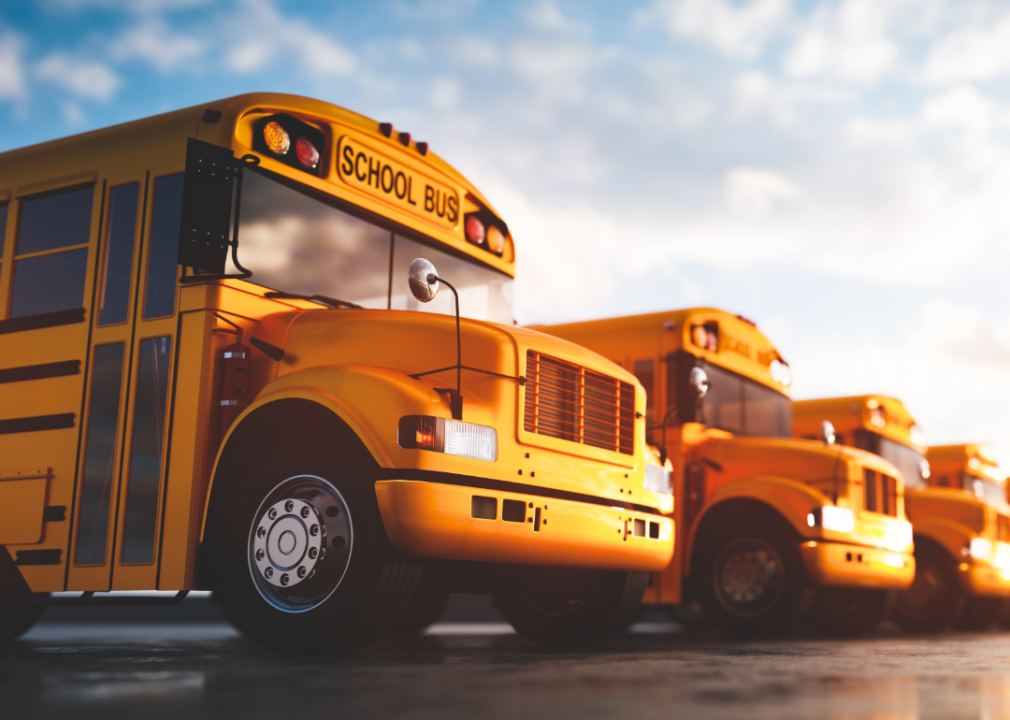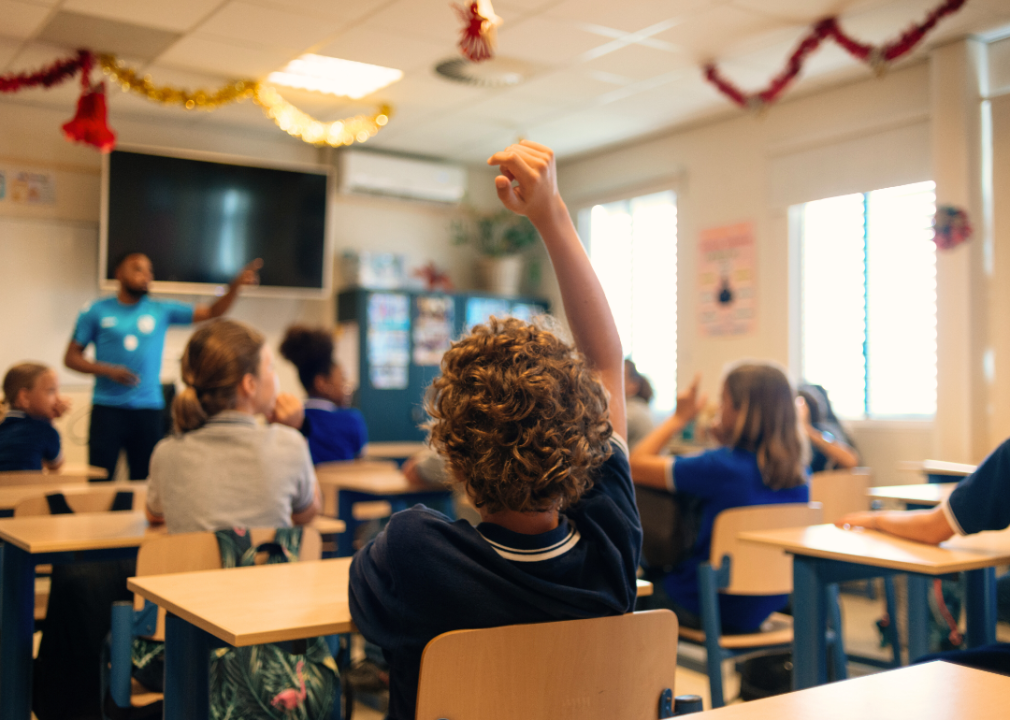Kids are going back to school during one of the hottest years on record. Here's how heat affects learning.

Canva
Kids are going back to school during one of the hottest years on record. Here’s how heat affects learning.
A row of school busses lined up under a blazing sun.
In July, global temperatures continued to climb to their highest levels on record, marking 14 consecutive months of record-high temperatures, according to a National Centers for Environmental Information report.
As temperatures climb, so do concerns over the effect of these hot weather days on learning. “Kids are coming to school and not even having their basic needs of comfort met; and if they don’t have their needs met, they can’t progress and learn and do all of those things we want them to do at school,” Madison McCulloch, a Columbus, Ohio, elementary school teacher, told American Progress.
McCulloch was one of the Columbus teachers who went on strike in 2022, in part to ensure her students would not be learning in unsafe environments with the increasing heat. After three days of picketing, the union came to an agreement, guaranteeing climate-controlled learning areas for the schools by the 2025-26 school year. Though Ohio’s case was a triumph for learning, many others may not be so fortunate despite the clear evidence that extreme heat and education do not mix.
With schools across the United States returning to the classroom this fall, studies have shown that heat can have a massive impact on students’ ability to learn. Study.com examined academic research to see how heat affects learning outcomes.
![]()

Canva
The heat is on education
A classroom of students seen from behind listening to their teacher, with some raising their hands.
A study published in the journal Nature Human Behavior in October 2020, combining standardized achievement data for 58 countries and 12,000 United States school districts, found learning is constrained by heat exposure, both internationally and within the U.S.
The study showed that climate variations may contribute to differences in educational achievement by socioeconomic status. Students who attended school during hotter periods scored worse on exams than their peers in the same country at school during cooler periods between 2000 and 2015. The same holds true in the U.S.: The study found that PSAT scores were lower during hotter years than years with cooler temperatures in the same school districts.
Cumulative heat exposure can also reduce how much students absorb in the classroom, while school air conditioning can mitigate heat’s impact on learning, according to a study published in 2020 by the American Economic Journal: Economic Policy.
The study found without air conditioning, a 1-degree Fahrenheit increase in temperatures reduces approximately 1% of a school year’s worth of learning. The study also discovered that the environment’s temperature appears to be a “meaningful contributor” to racial and geographic achievement gaps. Researchers found that Black and Hispanic students were inhibited from learning three times as much as white students—theoretically because these students were more likely to learn in classrooms without air-conditioning or reside in hotter locations.
Increased heat can also result in more disciplinary referrals, according to a 2022 working paper by a Harvard Kennedy School research fellow Kristen McCormack. On days when temperatures are between 80 and 90 degrees Fahrenheit and over 90 degrees, students were 4% and 9% more likely to be referred to an administrator for discipline than on school days with temperatures between 60 and 70 degrees.

Canva
A need to turn down the temperature
Elementary school students concentrate on laptops in a classroom.
According to a June 2020 report from the Government Accountability Office, approximately 36,000 schools across the country need to update or replace their HVAC units. About half of the schools GAO officials visited had older leaky systems, causing damage to floor and ceiling tiles. If these issues go unaddressed, they could lead to problems with indoor air quality and mold.
In the same study published by the American Economic Journal: Economic Policy modeling 10 million students who took the PSAT, researchers surmise that as much as 7% of the racial achievement gap can be explained by too much heat, with Black and Hispanic students bearing the brunt of this decline.
Studies are clear: U.S. schools must address the temperatures in their classrooms even as the world grapples with excessive heat. The Center for Climate Integrity estimates that by 2025, there will be a 39% increase since 1970 in the number of U.S. school districts expected to experience 32 or more days of temperatures over 80 degrees Fahrenheit—the threshold of days where schools typically install cooling systems. Without funding to help schools install and operate these systems, many students will be left languishing in the heat—and in terms of their education.
Story editing by Carren Jao. Additional editing by Kelly Glass. Copy editing by Kristen Wegrzyn.
This story originally appeared on Study.com and was produced and
distributed in partnership with Stacker Studio.